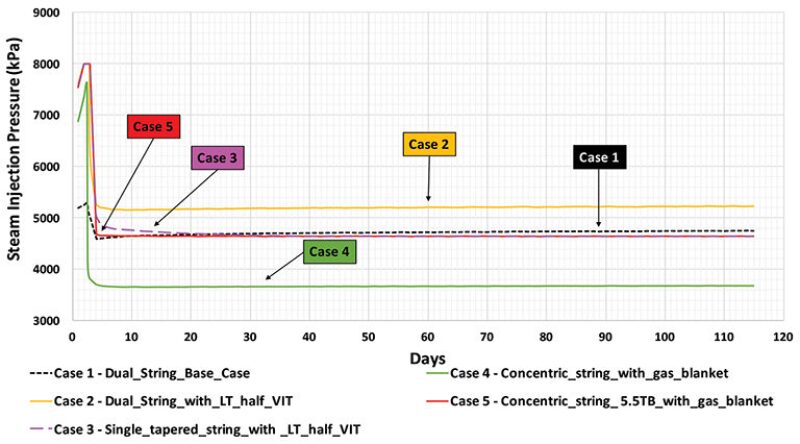During the circulation (startup) phase of steam-assisted gravity drainage (SAGD), high-quality steam injected through the injector and producer wells heats the reservoir between the wells. The viscosity is thus lowered, making fluids mobile at approximately 50 to 100°C and creating interwell fluid communication. This paper uses a simulation model to evaluate and compare the thermal efficiency of five different completion design cases during the SAGD circulation phase in the Lloydminster formation in the Lindbergh area in Alberta, Canada. The results show that completion-design configuration affects the heat transfer and thermal efficiency of the circulation process.
Introduction
The SAGD process is the most commonly used thermal method of in-situ recovery for extracting heavy oil and bitumen resources in Alberta and can yield recovery factors of greater than 60%. The technique requires two parallel horizontal wells, a producer and an injector, known as a well pair.


